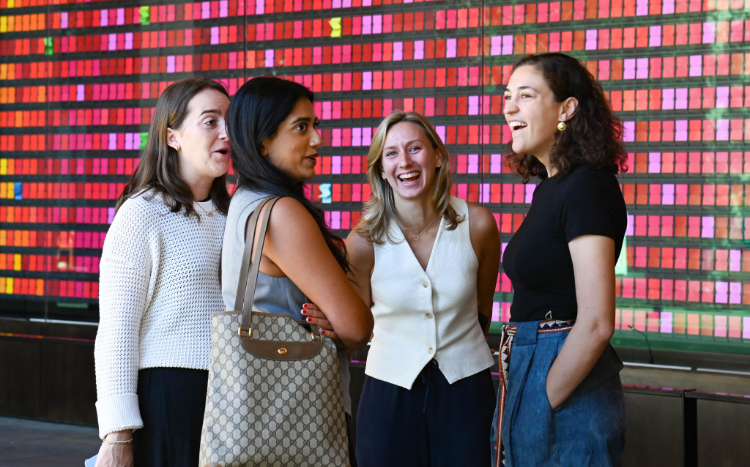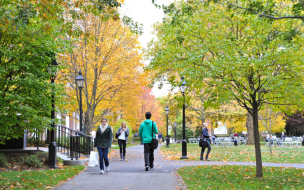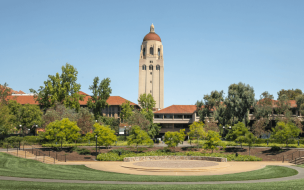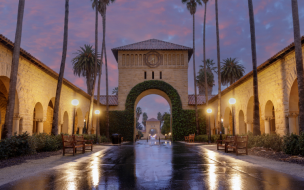Whether it's providing a platform to dive into the brain pool of Silicon Valley, an immersion in the latest technology trends, or driving forward the need for socially conscious business leaders in the modern economy, Stanford is a melting pot of expertise.
Every year Stanford grads land jobs with some of the world's largest companies. The incoming 424 members of the Stanford MBA class of 2026 look to emulate those before them. The Stanford MBA received 7,295 applications for the class of 2026, with an admission rate of around 6%.
If you’re considering applying to Stanford, you need to understand what kind of students fill the MBA class, and how you can leverage your own experience and background in your application.
The incoming class come from a wealth of organizations across investment management, consulting, technology, government, consumer products, and healthcare. International students make up 39% of the class.
In this BusinessBecause Breakdown, we explore the Stanford MBA class profile, covering GMAT scores, diversity statistics, and students' previous experiences.

Stanford MBA Class of 2026 | Overview
The entering students of the Stanford MBA class of 2026 are plucked from a few distinct undergraduate majors: 31% of the class studied engineering; 20% majored in economics; 18% in business; and 10% were math or sciences majors.
The class’s average GMAT score (under the previous scoring system) is 738.
Stanford has also focused its attention on diversity in recent years, breaking the class demographic down on a more granular level.
With 39% of students classed as international, there are 72 countries represented.
Women account for 44% of the class, slightly down by 2% compared to the class of 2025, and US students of color make up 53% of the MBA classroom—up by 3% from the previous year.
Stanford continues to compile in-depth data on the identities of MBA students in the class.
Among the US citizens and permanent residents in the MBA class of 2026, 44% identify as White; 30% as Asian; 7% as Hispanic or Latino; and 8% as Black or African American.
GMAT Scores
The GMAT scores of an MBA class are a benchmark for the academic excellence you’ll have to showcase if your MBA application is to be successful.
As the primary standardized exam for business school admissions, the GMAT has recently updated its structure and scoring system. Although scores continue to be given in 10-point increments, the new scale spans from 205 to 805, replacing the old range of 200 to 800.
However, those who took the test prior to February 2024 can still use their scores for up to five years.
Stanford’s MBA class of 2026 has set the bar high. The average GMAT score of the class is 738 under the GMAT 10th Edition scoring system. This roughly translates to 675-685 under the current GMAT scoring system.
This means that the Stanford class of 2026 are among the top 4% of test takers.
If you plan on applying to Stanford, it’s probably time to dust off those GMAT test prep books and get practicing.
Stanford MBA class of 2026 | Pre-MBA undergraduate majors
Undergraduate Majors
The academic backgrounds of an MBA class are a good indicator of the types of people you’ll be sharing a classroom with, along with industry backgrounds.
The Stanford MBA class of 2026 comes largely from distinct academic backgrounds. In total, 31% of the class majored in engineering, 10% in math or sciences—a 5% decrease on the previous MBA class—16% in social sciences; 5% in humanities; and 18% in business.
So, you’ll likely be sharing a classroom with students who are looking to couple business expertise with a knowledge of wider society—a good sign for Stanford achieving its goal of creating business leaders who make the world a better place.
Humanities and social science students are expected to bring to the classroom empathy and the ability to see things from multiple viewpoints, which makes for good classroom debate. There is also a strong contingent of engineering and mathematics majors, signaling a classroom built for the needs of the digital economy.
In total, 12% of the class are the first in their families to graduate from a four-year college or university degree; 16% are advanced degree holders—down by 1% from the class of 2025.
Stanford MBA class of 2026 | Pre-MBA industries
Work Experience
So, you’ve landed a spot on an MBA. What professional experience should you expect your classmates to have?
At Stanford, the average work experience of the class of 2026 is 5.1 years, and students come from all over, with 289 organizations represented.
Consulting (20%), investment management/private equity/venture capital (19%), and technology (14%) are the three most represented industries. Professionals also come from government, education, and non-profit; from consumer products and services; healthcare; financial services; and the military.
Students in the class of 2026 also came from the arts, media, and entertainment industries; from clean technology, energy, and environmental work; and from manufacturing.

The Stanford MBA class of 2026 boasts a strong average GMAT score and students also come primarily from college majors in engineering, economics, social sciences, and business.
There are strong diversity stats across the board, and the classroom boasts multiple industry perspectives.
That means the Stanford MBA is for you if you’re more of a ‘non-traditional’ candidate looking to be surrounded by a cohort that complements tech-savvy grads with those who can speak to the issues facing wider society. If you want to become a business leader with a conscience who is also technically skilled, this is the MBA for you.
If you’re after a more traditional MBA that looks at business through a more classic lens, then perhaps Stanford should be further down your list of target schools. That’s not to say you should count it out completely though—there are still 18% of students with majors in business, and the industry diversity speaks to the wide array of talent Stanford’s admissions team is after.
But looking at the recruitment stats, the Stanford MBA is becoming a melting pot of socially driven tech-savvy students driven by a social purpose.

Next Read:
Stanford MBA Application: Everything You Need To Know
*The data in this article is based on the Stanford MBA Class Profile / this article was updated in October 2024 to reflect the new Stanford MBA class of 2026.
RECAPTHA :
8c
7d
5b
d8




 1
1 




Comments.